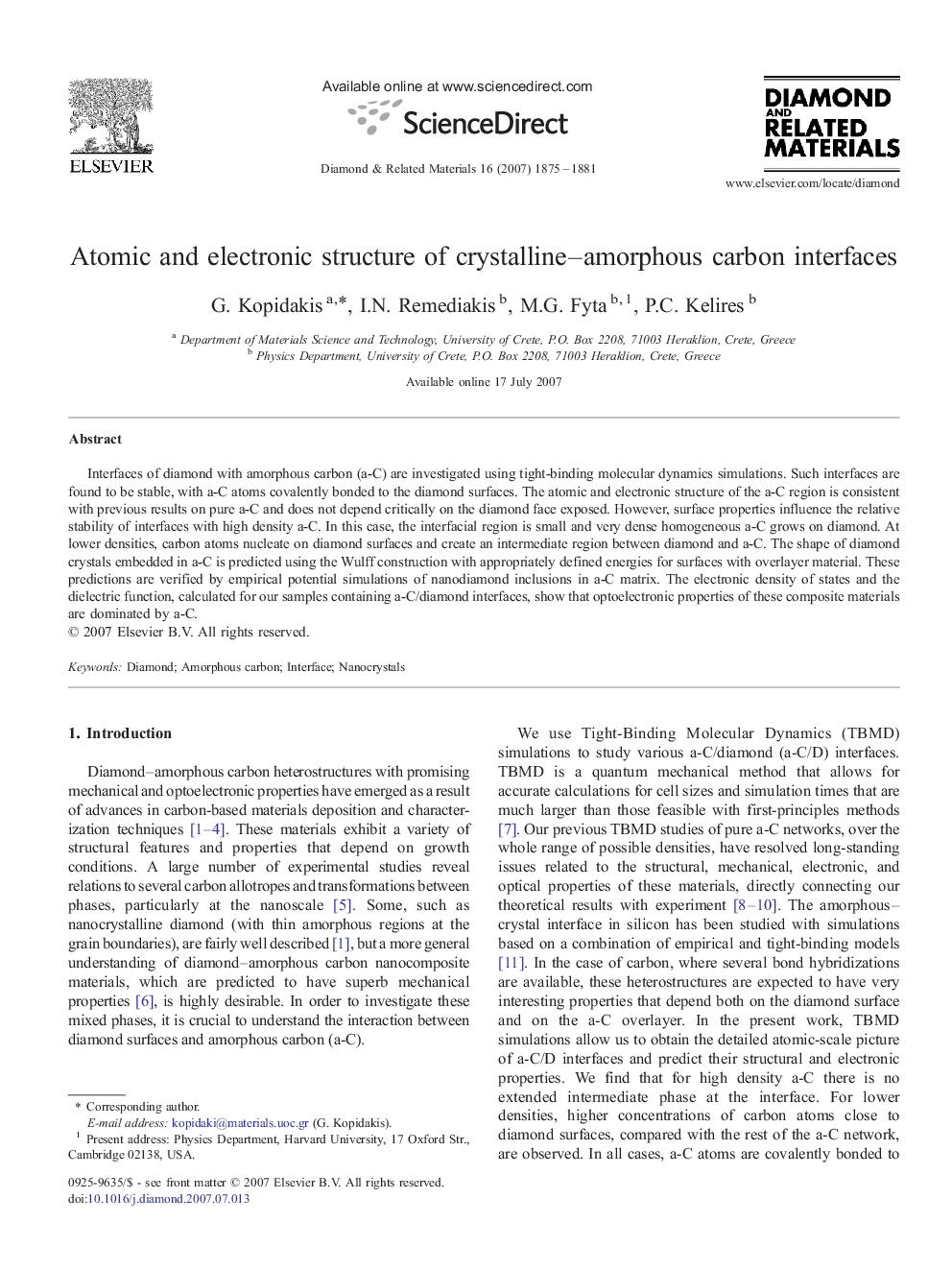| Article ID | Journal | Published Year | Pages | File Type |
|---|---|---|---|---|
| 703636 | Diamond and Related Materials | 2007 | 7 Pages |
Interfaces of diamond with amorphous carbon (a-C) are investigated using tight-binding molecular dynamics simulations. Such interfaces are found to be stable, with a-C atoms covalently bonded to the diamond surfaces. The atomic and electronic structure of the a-C region is consistent with previous results on pure a-C and does not depend critically on the diamond face exposed. However, surface properties influence the relative stability of interfaces with high density a-C. In this case, the interfacial region is small and very dense homogeneous a-C grows on diamond. At lower densities, carbon atoms nucleate on diamond surfaces and create an intermediate region between diamond and a-C. The shape of diamond crystals embedded in a-C is predicted using the Wulff construction with appropriately defined energies for surfaces with overlayer material. These predictions are verified by empirical potential simulations of nanodiamond inclusions in a-C matrix. The electronic density of states and the dielectric function, calculated for our samples containing a-C/diamond interfaces, show that optoelectronic properties of these composite materials are dominated by a-C.
